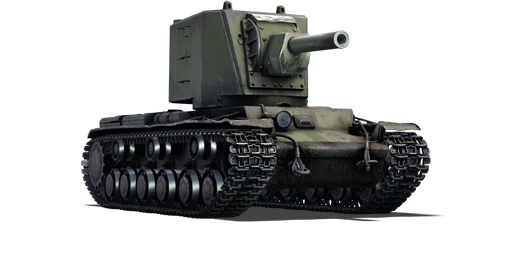



The KV-2 (1939) is a Soviet heavy tank. It was introduced during the Closed Beta Test for Ground Forces before Update 1.41. One of the most infamous tanks in the Soviet tree, the KV-2 introduces the concept of heavy-calibre armaments that will trend on other Soviet heavy tanks.
The KV-2 is a modification of the KV-1 that mounted a M-10T (152mm) howitzer in order to provide support to infantry against fortified positions. The large and extremely heavy turret, necessary to mount the 152 mm howitzer, results in a slow traverse time. Its gun is an effective breach weapon, designed against fortifications. Despite this usage, very few were made, with the majority being lost due to breakdowns and not German forces because none of their tanks at that time could penetrate the thick armour.
The KV-2 is a behemoth of a tank, which players feared due to the devastating punch of its 152 mm round and its distinctive and intimidating profile. However, these traits also serve as the tank's weaknesses. The KV-2 can be an effective force on the battlefield, and is well-loved by the community, being christened with numerous nicknames, usually in reference to its abnormally large armament calibre, large profile, or its iconic and legendary status in the Soviet tech tree. The KV-2 has also been given the title "The King Of Derp" by the fanbase.
| Ammunition | Type | Armor penetration (mm) at a distance: | |||||
|---|---|---|---|---|---|---|---|
| 10 m | 100 m | 500 m | 1000 m | 1500 m | 2000 m | ||
| SAPCBC | 69 | 68 | 64 | 60 | 56 | 52 | |
| HE | 48 | 48 | 48 | 48 | 48 | 48 | |
| SAPCBC | 86 | 85 | 81 | 77 | 73 | 70 | |












Mobility | |
|---|---|
Protection |
|---|
Firepower | |
|---|---|